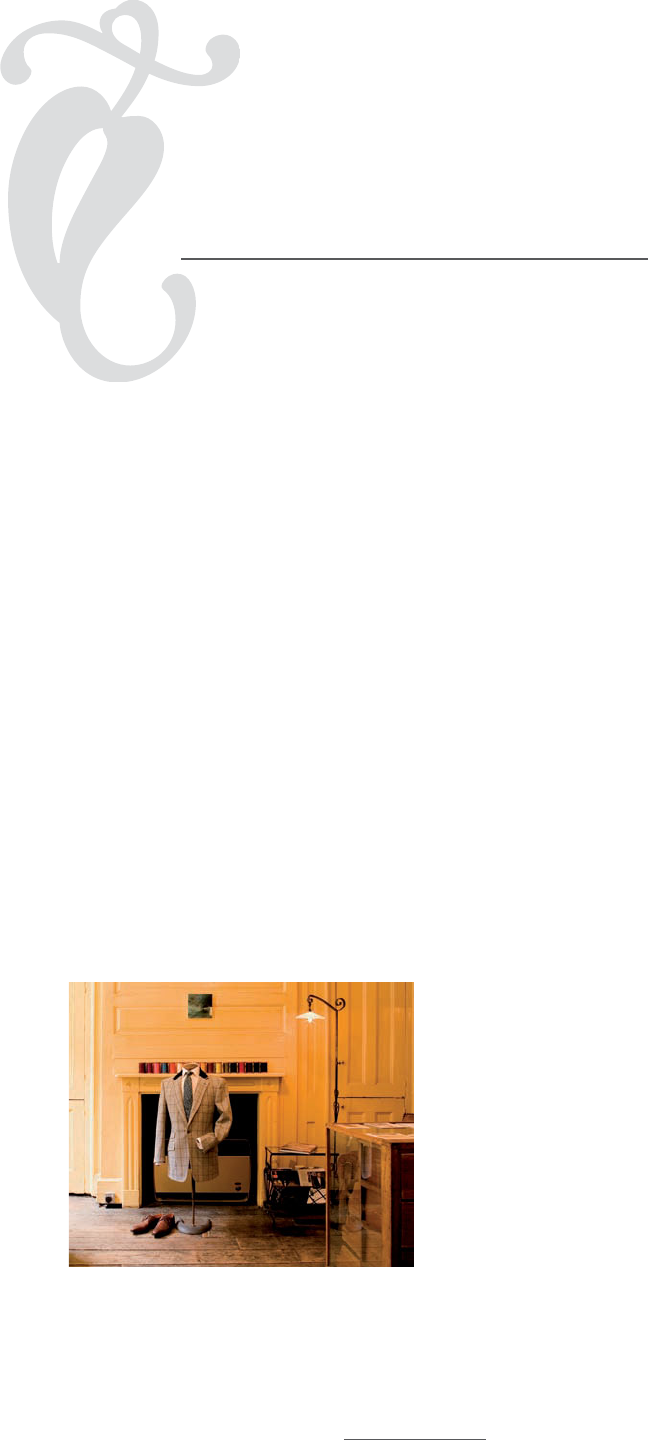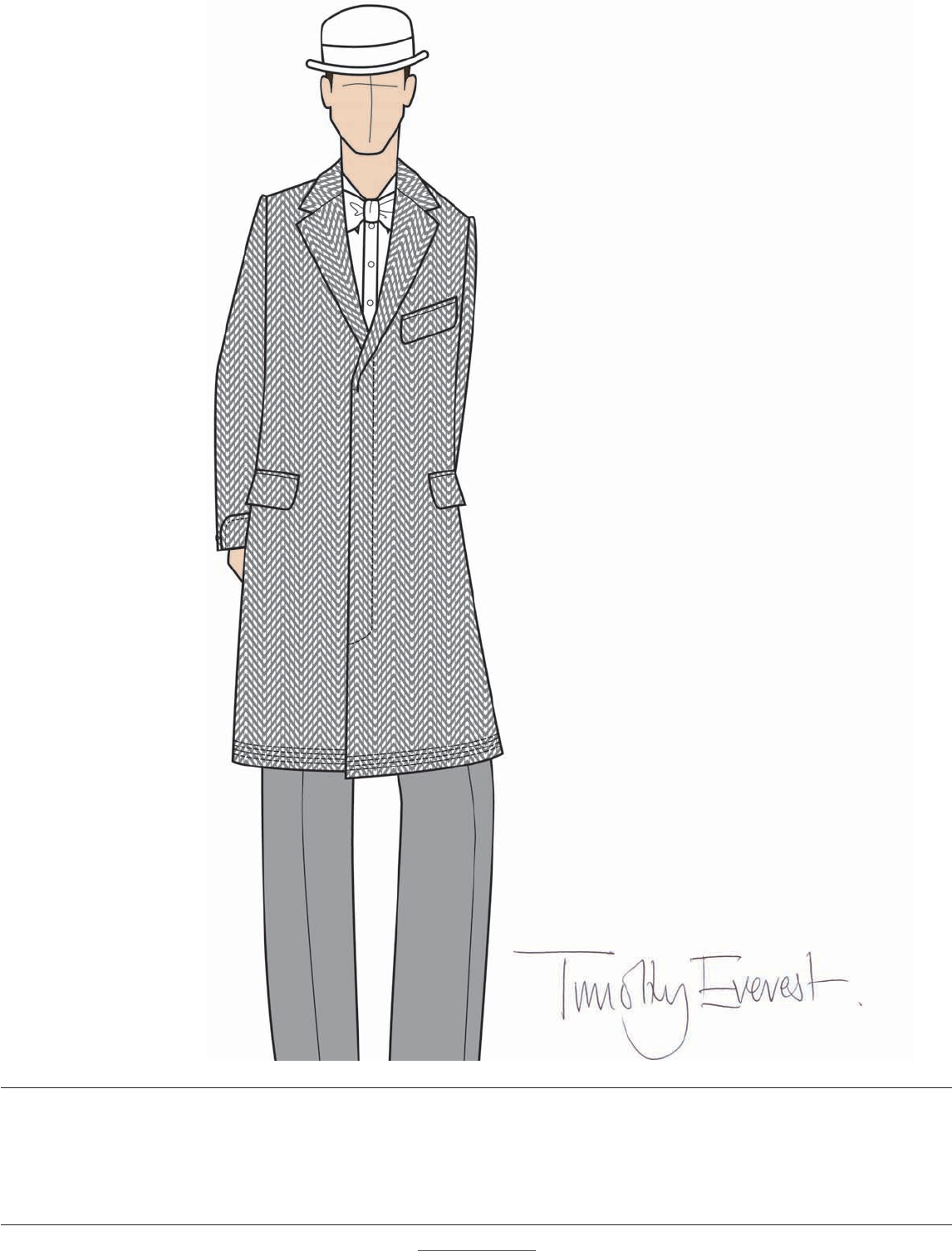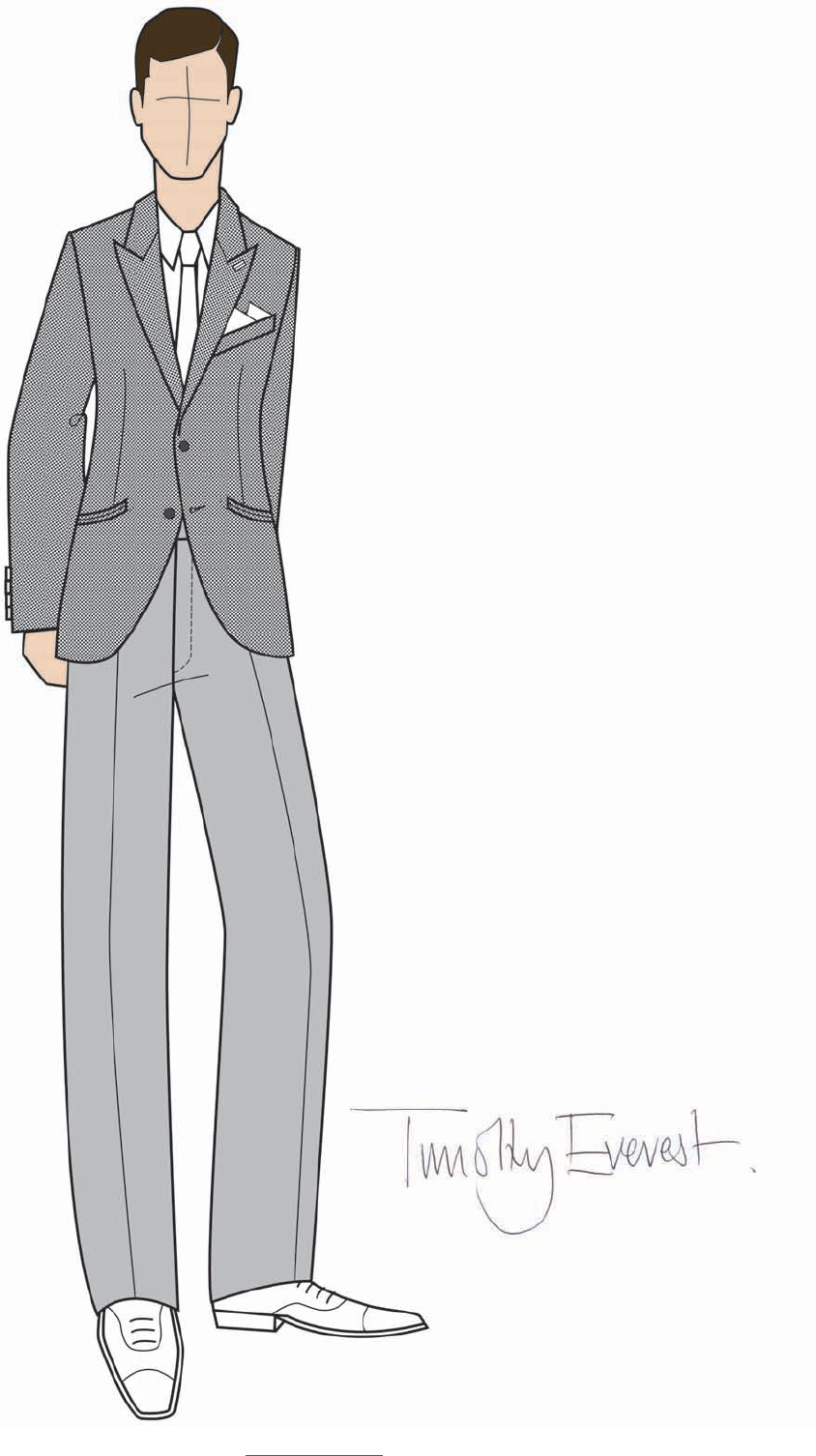
551
Timothy Everest
Timothy Everest
Ti
Timothy Everest is one of the best representatives of the renovation in tailoring that seeks
to grant a contemporary and progressive touch to a trade which, for years, has been bound
to tradition and craftsmanship.
Timothy’s impeccable and punctilious work is directed at customers seeking both elegance
and sophistication. He is sensitive enough to appreciate the sober grace of good tailoring
while seasoning it with a touch of color or an unusual accessory. For this reason, musicians,
artists, actors and many other clients have visited his Georgian workshop in Spitalfi elds in
search of an exquisite suit with a personality all its own. is ingenious tailor received his
fi rst commission in 1989, followed by his fi rst pret-a-porter collection in 1999. Since then,
he has been met with unceasing success, combining work on his own projects with that for
other brands and labels like Marks & Spencer, whose “Autograph” line he has collaborated
on for some time, or designer Kim Jones, whose successful Spring/Summer 2005 collection
he also contributed to, or the denim suits he created for Levi’s.
Everything that Timothy puts his hands on becomes a standard for quality, innovation
and good taste. A balance between the classical and the contemporary, between research
and the legacy of tailoring. An ingenious artisan not afraid to explore beyond the limits of
the known, a trait exemplifi ed by his foray into the increasingly expansive Asian market. A
designer without frontiers whose far-reaching vision allows him to explore new avenues for
reinterpreting a trade so traditional it must situated ahead of its time.
Photography courtesy of Timothy Everest

552
Timothy Everest
In the fi rst sketch, a knee-length
button-down town coat with concealed
fl y front opening and bespoke detail
cuff . In the second, a single-breasted
two-button jacket with double-jetted
half-moon pockets and a four-button
cuff .
Sketch courtesy of Timothy Everest

553
Timothy Everest
Sketch courtesy of Timothy Everest

554
Timothy Everest
- Are you responsible for all the creative direction, or is it shared with a creative team?
Yes, it’s my creative direction.
- What percentage of you is a designer and what percentage a tailor?
I would say it is 50/50, in the sense that I think it is important that we are tailors who design, not designers who have
discovered tailoring.
- Is the main aim of Timothy Everest the worship to detail?
Yes, we worship detail. It is very important. Tailoring is all about attention to detail and what might need adjustment.
ose little things that are very subtle are very important.
- Which are the advantages of being tailor when designing a collection?
e advantage is actually knowing about shape proportion, fi t and how garments go together. We have people that are
very good at drawing and can design ideas but would not necessarily be able to put them together. It is a big advantage
to be able to put things together, but also to understand how they are all built in order to make a much better garment,
a much better look.
- e selection of fabrics is a crucial part of designing a collection. How do you develop this process?
We constantly evolve the fabrics that we use; our benchmark has always been very British, but it also has an element
of luxury, and Susan and I are always looking for new things. For example, we were looking for tweed for the autumn-
winter away and we managed to fi nd some tweed in Japan, tweed yarn mixed with denim yarn that ended in something
traditional but very modern.
- Which can be the course of tailoring? Can it walk beside fashion or, as it happened in some countries, does it run the
risk of disappearing under the dressmaking industry?
When we started the business, tailoring was in great danger of disappearing, but fortunately now it is probably more
popular than it has been for a long time. e problem is the craft and the custom made is becoming smaller and smaller.
Having said that, “ready to wear” is becoming very popular just in time. You are talking about fashion versus tailoring.
It’s talking about something very individual; it’s for that person. After the infl uences of the 60s and the 80s in fashion,
there is really nothing very new, so I think tailoring it is a great vehicle, because the only way to be modern it is to be
yourself, and tailoring is a big expression of that.
Timothy Everest
Unit B24 Corbet Place
London E1 6NH
United Kingdom
design@timothyeverest.co.uk/www.timothyeverest.co.uk
Get Atlas of Fashion Designers now with the O’Reilly learning platform.
O’Reilly members experience books, live events, courses curated by job role, and more from O’Reilly and nearly 200 top publishers.

